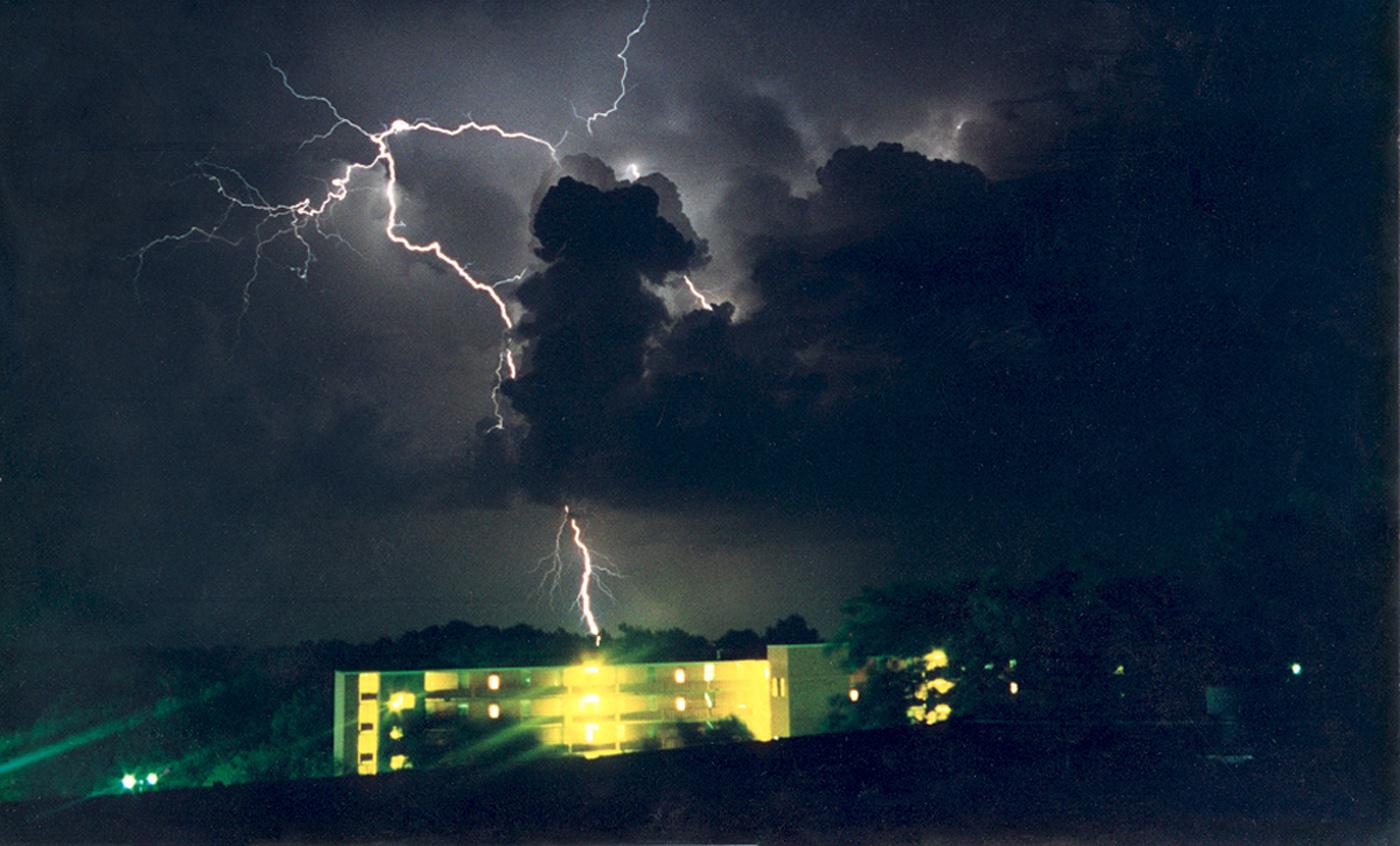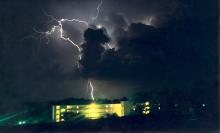Information Possibly Outdated
The information presented on this page was originally released on June 17, 2010. It may not be outdated, but please search our site for more current information. If you plan to quote or reference this information in a publication, please check with the Extension specialist or author before proceeding.
Caution: Lightning threats remain high
MISSISSIPPI STATE -- The odds of being hit by lightning may seem remote, but the threat is real, and outdoor -- and some indoor -- activities should be altered when thunderstorms are nearby.
Mike Brown, associate professor in geosciences at Mississippi State University, is a seasoned storm chaser. When he is educating new storm chasers, he emphasizes the threats that come from lightning.
“When we are out chasing storms, there are two things that still scare me: other drivers on the roads and lightning,” he said. “Even with all we know about weather, we cannot predict when and where lightning will strike.”
In a ranking of Southeastern Conference football stadiums that considers numbers of lightning strikes and game attendance figures, MSU ranks second to Louisiana State University for the greatest risk.
“LSU is by far the most dangerous location, with the next four schools -- MSU, Arkansas, Alabama and Mississippi -- all fairly close together in the rankings,” Brown said. “About 55 cloud-to-ground strikes occur annually within a 1-mile radius of the MSU Drill Field flagpole.”
In general, Brown said if people can hear thunder, they should go inside.
“If lightning occurs within 6 miles of your location, you can be struck,” he said. “Measure the distance by counting from the time of the flash until the thunder. Every five seconds equal 1 mile.”
Ted Gordon, Extension safety specialist at the North Mississippi Research and Extension Center in Verona, said the best way to avoid being caught in a dangerous situation is to postpone outdoor activities if thunderstorms are expected.
“If you are outside, move to a sturdy building or a hard-top vehicle. Do not take shelter in small sheds or under isolated trees. Stay away from tall objects, such as towers, fences, telephone poles and power lines,” Gordon said. “If lightning is occurring and a sturdy shelter is not available, get inside a hard-top automobile and keep the windows up. Avoid touching any metal.”
The danger does not end once inside a sturdy building.
“Avoid using the telephone or any electrical appliance. Unplug appliances not necessary for obtaining weather information. Turn off the air conditioner. Power surges from lightning can cause serious damage to electronic equipment, or even fires,” Gordon said. “Use phones only in an emergency. Do not take a bath or shower during thunderstorms.”
Some high-risk activities include boating, swimming, golfing, bike riding, riding a lawnmower, horseback riding, talking on a telephone, and attending or participating in athletic events.
June 20-26 is Lightning Safety Week. Go to http://www.lightningsafety.noaa.gov for more information on lightning safety.




